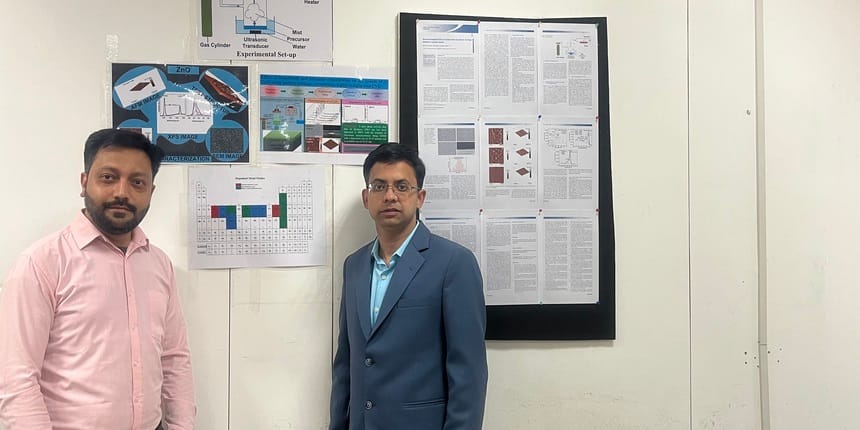IIT Mandi develops cost-effective method to produce metal oxide layers for solar cells
Ishita Ranganath | March 20, 2023 | 03:45 PM IST | 2 mins read
The new development by IIT Mandi is cost-effective and has the potential to become crucial to India's solar energy industry.

NEW DELHI: Indian Institute of Technology (IIT) has developed metal oxide layers for use in advanced architecture silicon solar cells. The researchers produced ultrathin films of metal oxides from cheaper starting materials using an aerosol-assisted chemical vapour deposition technique.
The results of the development were published in the journal of Material Science: Materials in Electronics. The paper was co-authored by IIT Mandi, school of computing and electrical engineering, associate professor, Kunal Ghosh along with his PhD scholars, Syed Mohd Hussain and Md Sadullah.
Also Read | IIT Mandi develops AI algorithm to improve accuracy of landslide prediction
Currently, metal oxides such as nickel oxide are an important class of semiconductors used in advanced architecture silicon solar cells are expensive. The materials used for the development of such film are also expensive which makes it less likely for the technology to be commercially produced.
The IIT Madi project is at present in its early stages of development, however with further development and increased technology readiness level (TRL), this technology can be adopted by the industry. According to a press release, the research has potential to enhance the fabrication process of advanced architecture silicon photovoltaic devices, reducing the cost and complexity of commercial techniques.
Also Read | IIT Madras employs solar thermal energy to recycle waste concrete
India currently has a manufacturing capacity of 3GW for solar cells and 15GW for modules. However, the government plans to create an additional domestic solar equipment manufacturing capacity of 25 gigawatts (GW) each of solar cells and modules, and 10GW of wafers by April 2023. The IIT Madi research can become crucial for India's solar industry.
Speaking on the research breakthrough, IIT Mandi, associate professor, Kunal Ghosh said: "Our research shows that it is possible to develop a cost-effective and scalable process for the production of metal oxide layers for solar cells. This new method has the potential to revolutionize the solar industry by reducing the cost and complexity of current production techniques. Additionally, as the whole process including the equipment is developed in-house, the generated IP will contribute towards ATMANIRBHARTA in the area of advanced architecture silicon solar cells."
Follow us for the latest education news on colleges and universities, admission, courses, exams, research, education policies, study abroad and more..
To get in touch, write to us at news@careers360.com.